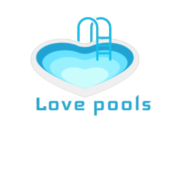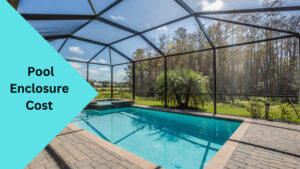Welcome to our comprehensive guide on pool enclosure costs! If you’re a pool owner, you may have considered adding a pool enclosure to your outdoor oasis, but you’re unsure about the associated costs. In this blog post, we will dive into the pricing and benefits of pool enclosures, helping you make an informed decision. From understanding the advantages of having a pool enclosure to exploring the various factors influencing the costs, we’ve got you covered.
Are you wondering, “How much does a pool enclosure cost?” or “What are the benefits of a pool enclosure?” You’ve come to the right place. Let’s dive in!
Understanding Pool Enclosures
Before we delve into the costs, let’s first understand what pool enclosures are. A pool enclosure is a structure that surrounds your pool, providing a barrier between the pool water and the external environment. It consists of transparent panels, screens, or a combination of both, along with a supporting structure.
These enclosures come in various shapes, sizes, and materials, offering different levels of protection and aesthetics. From basic screen enclosures to more elaborate structures with retractable roofs and walls, you can choose an option that suits your preferences and budget.
Benefits of Pool Enclosures
Investing in a pool enclosure offers several compelling benefits that make it worth considering. Here are some key advantages:
- Extended Pool Season: A pool enclosure helps extend the swimming season by providing a shield against outdoor elements such as leaves, debris, and insects. With a pool enclosure, you can enjoy your pool for a longer period, even during inclement weather.
- Increased Safety: Pool enclosures act as a safety barrier, preventing young children and pets from accessing the pool unsupervised. This added layer of security can bring peace of mind to pool owners, reducing the risk of accidents.
- UV Protection: Pool enclosures can filter harmful ultraviolet (UV) rays, protecting swimmers from excessive sun exposure. This not only keeps your skin safe but also minimizes the risk of sunburn and related health issues.
- Reduced Maintenance: By keeping debris and leaves out of your pool, enclosures contribute to decreased maintenance requirements. This means less time spent skimming and cleaning, and more time spent enjoying your pool.
- Energy Efficiency: Pool enclosures can help retain heat in colder climates, reducing energy costs associated with pool heating. By trapping warmth and reducing heat loss, they make your swimming experience more comfortable and environmentally friendly.
- Improved Aesthetics: Adding a pool enclosure can enhance the overall appearance and ambiance of your pool area. With various design options available, you can choose a style that complements your home and landscaping, creating a visually pleasing and cohesive outdoor space.
Factors Affecting Pool Enclosure Costs
Now that we understand the benefits, let’s discuss the factors that influence pool enclosure costs. It’s important to note that the following variables can significantly affect the overall price:
- Size and Complexity: The size of your pool and the complexity of your desired enclosure design will play a significant role in determining the cost. Larger pools or unique shapes may require custom-made enclosures, which can be more expensive than standard sizes.
- Materials Used: The materials you choose for your pool enclosure will impact the cost. Options include aluminum, vinyl, fiberglass, and glass. Each material has different pricing structures based on durability, aesthetics, and maintenance requirements.
- Additional Features: If you opt for additional features such as a retractable roof, built-in lighting, or a heating system, the cost of your pool enclosure will increase accordingly. These extras can elevate your pool experience but keep in mind they come with an additional price tag.
- Local Regulations and Permits: The cost of obtaining necessary permits and adhering to local regulations can vary by location. Before starting the installation, ensure that you are aware of any legal requirements and associated costs in your area.
- Labor and Installation: The cost of labor and installation can vary depending on the complexity of the project, local labor rates, and the expertise of the installation team. It’s crucial to work with experienced professionals to ensure the job is done properly.
Different Types of Pool Enclosures

Pool enclosures come in various types, each offering unique features and cost considerations. Here are some common types you can choose from:
- Screen Enclosures: Screen pool enclosures are a popular and cost-effective option. They are typically constructed using aluminum frames and fiberglass or polyester screens. These enclosures provide protection against debris, insects, and leaves, while still allowing natural airflow and visibility.
- Glass Enclosures: Glass enclosures offer a high-end, luxurious look and enhanced visibility. They can be fully or partially transparent and come with sturdy aluminum frames. One major advantage of glass enclosures is their ability to provide an unobstructed view of the surroundings.
- Retractable Enclosures: Retractable enclosures provide the best of both worlds by offering flexibility and versatility. These enclosures can be opened or closed, allowing you to enjoy an open-air experience on pleasant days and a closed environment during unfavorable weather conditions.
- Solarium Enclosures: Solarium enclosures, also known as conservatories, are fully enclosed structures with glass or polycarbonate walls and roofs. They offer maximum protection, maintain a controlled environment, and allow for year-round pool usage.
Typical Screen Pool Enclosure Pricing
While the costs of pool enclosures can vary significantly depending on the factors mentioned earlier, we can provide a rough idea of the average pricing for screen pool enclosures:
- Size: A standard 12’x’ rectangular screen enclosure can cost anywhere from $5,000 to $8,000, including materials and installation.
- Custom Sizes: For larger pools or unique shapes, custom enclosures are required. Customized screen enclosures can range from $10,000 to $20,000, depending on complexity and materials used.
- Upgrades and Features: Additional features such as door options, higher-quality screens, and decorative elements may incur extra costs. Be prepared to allocate an additional budget of $1,000 to $5,000 for upgrades and special features.
It’s essential to obtain quotes from multiple vendors and compare their offerings. Remember, while cost is an important factor, quality and reliability should also be considered when selecting a pool enclosure provider.
Did you know Unveiling the Wonders of Inground Pool Handrails: A Complete Guide
Tips for Getting the Best Value
- Research and Compare: Spend time researching different types of pool enclosures and comparing prices from multiple providers. Look for companies with a good reputation, experience, and positive customer reviews.
- Seek Recommendations: Ask friends, family, or neighbors who have installed pool enclosures for their insights and recommendations. They can provide valuable information about their experience, the installation process, pricing, and lessons learned.
- Consider Long-Term Costs: While upfront costs may vary, it’s crucial to consider long-term maintenance and energy costs. Opting for quality materials and energy-efficient features may have a higher initial investment but can result in cost savings down the line.
- Get Multiple Quotes: Obtain quotes from at least three different pool enclosure providers to gauge the prevailing market rates. This will allow you to identify any major price discrepancies and choose the best option for your budget and needs.
- Warranty and After-Sales Support: Inquire about warranties provided by the pool enclosure manufacturer or installer. A reputable company will offer warranty coverage, ensuring any issues that may arise will be addressed promptly.
Maintenance and Repairs
To maximize the lifespan of your pool enclosure and preserve its functionality, regular maintenance and prompt repairs are essential. Here are some maintenance tips to keep in mind:
- Regular Cleaning: Clean your pool enclosure on a regular basis with mild soap and water. Avoid using abrasive or harsh cleaning agents that can damage the materials.
- Inspect for Damage: Routinely inspect the enclosure for any signs of damage, such as torn screens, corroded frames, or loose fittings. Address these issues promptly to prevent further deterioration.
- Maintain Surrounding Vegetation: Trim back any trees, bushes, or vines that could potentially damage the enclosure or obstruct its functionality. Keeping the surrounding vegetation in check will minimize the risk of debris accumulation and potential damage.
- Schedule Professional Inspections: Consider scheduling periodic inspections by a professional to assess the overall condition of your pool enclosure. They can identify any potential issues early on and recommend necessary repairs or maintenance.
Remember, proactive maintenance can help avoid costly repairs in the long run and ensure that you continue to enjoy all the benefits of your pool enclosure for years to come.
Related post for you : Exploring the Benefits of an Inground Pool Hot Tub Combo
Conclusion
Now that you have a comprehensive understanding of the costs associated with pool enclosures, you can make a well-informed decision regarding your investment. Pool enclosures offer numerous benefits, including extended pool season, enhanced safety, reduced maintenance, and improved aesthetics. By considering factors such as size, materials, additional features, and local regulations, you can estimate the cost of your pool enclosure more accurately.
When exploring the options available, don’t forget to research different types of enclosures, seek recommendations, and obtain multiple quotes. Remember that quality, durability, and long-term cost considerations should be of utmost importance when making your decision.
Investing in a pool enclosure is an investment in your enjoyment, safety, and overall pool experience. So dive in and explore the possibilities for transforming your pool into a year-round oasis!

Greetings, fellow pool enthusiasts! I’m Turner Davis, your dedicated guide to the world of pool care and maintenance. With over a decade of experience in the field, I’ve made it my mission to transform ordinary pools into extraordinary aquatic retreats.

